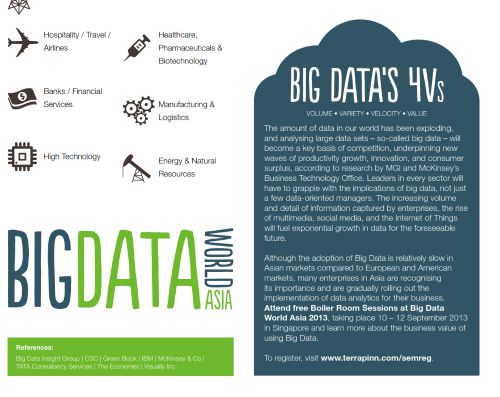There is a rising public outcry over various biases that exist in the workplace worldwide. Disparities in pay, career mobility, and talent management are some of the areas where employees still feel excluded and biased. Global leaders and corporations are making significant efforts to bring value to society with their improved cultures and policy frameworks.

Diverse and inclusive workplaces is a notion that commonly everyone agrees to. Many companies today are rapidly creating diverse and inclusive environments by finding and nurturing the best talent, increasing employee engagement, reducing pay disparities, and improving customer willingness to buy.
However, the process to establish concrete measures and implement effective strategies is not just easy. To cultivate a respectful and unbiased environment that fosters diversity, equity, and inclusion requires constant effort and mitigating policies that ensure a safe and sound workplace.
“Increasing awareness isn’t enough. Teach people to manage their biases, change their behaviour, and track their progress” – Francesca Gino and Katherine Coffman in Rebel Talent.
In response to growing demands for diversity and inclusion, boards and CEOs are experiencing heightened investor expectations to fulfil their commitments. Notably, various global platforms including The Valuable 500, Ruh Global Impact, and Billion Strong, are leveraging their expertise and helping corporations to embrace diversity and achieve their goals.
First-off, simply putting D&I “initiatives” in place does not effectively address these long-standing disparities. Instead, leaders should infuse D&I strategically into the culture of organisation.
Following are the effective strategies that can turn D&I into an improved employee experience and a strategic advantage for the enterprise.
C-level enforcements
The C-suite of an organisation needs to take a public stance, embedding DE&I in the organisation’s purpose, exemplifying the culture, and taking responsibility for progress toward goals. They need to be out front.
Bob Moritz, Chairman of PricewaterhouseCoopers International, is an example for gender equality. He serves as a UN HeForShe Corporate Impact Champion, advocating for gender equality and engaging men as agents of change. Under his leadership, PwC has committed to establish the practices and procedures for reporting against these standards, publicly reporting against them across a majority of territories, sharing experience and encouraging their clients, industry peers, and standards bodies to follow the same approach – particularly in the area of gender and inclusive workplaces.
David Kenny, CEO of Nielsen, added the CDO title to his leadership portfolio in 2018 so he could “set hard targets for ourselves and make those transparent to our board and measure them like we measure other outcomes like financial results.” He relinquished that title to a new CDO in March 2020, noting the D&I progress his team had already made.
A board member also has an essential role to play in D&I governance. A board that has diversity inclusion in its framework ensures a culture where action creates the foundation of change.
DE&I as a part of business strategy
D&I is more than just an “HR issue”. It is the core ingredient in the design and execution of business strategy and embedded in the activities of the organisation day in, day out.
Increasing the number of diverse individuals and involving them in the strategy process will help develop a core purpose that better reflects a broader group of customers and employees.
“Corporations are made up of people. They need to look at their geo-footprint and understand consumer expectations, show leadership, and join global conversations to bring value to society”, says Debra Ruh, CEO of Ruh Global Impact.
A group that is designed on diversity is more likely to create products and services that work for a braoder consumer group.
Besides avoiding biased assumptions, generalisations, or shortcuts this strategy allows a wider spectrum of consumerism.
When companies test their product and services keeping in mind the diverse range of potential clients and employees, it can make necessary adjustments to cater to wider acceptance and utilisation of the final product.
An effective DE&I strategy also helps in creating a framework ecosystem for operating procedures that align with DE&I objectives. This enables corporations to create and deliver inclusive products and services that resonate with a wide range of customers and employees.
Joaquin Duato, Chairman and CEO of Johnson & Johnson, who has put D&I at the centre of his pursuit of sustainable competitive advantage. He actively supported the African Ancestry Leadership Council employee resource group and is committed to fostering an inclusive workforce that reflects the diverse patient population served by Johnson & Johnson.
Accountability for DE&I
“Ideas are easy. Execution is everything.” – John Doerr, Measure What Matters
A leader is accountable for achieving two sets of D&I goals in their part of the business: diversity and inclusion. While diversity focusses on representation such as hiring, promotion, and mobility outcomes, inclusion focusses on day-to-day experiences such as employee engagement, equity, and psychological safety outcomes.
Many global corporations like Starbucks and McDonald’s are already working on defining key performance indicators for DE&I. Nestlé’s CEO, Mark Schneider, has stipulated that each leader’s performance and progress will be assessed based on gender, ethnicity, and disability, and LGBTQ+ equity goals.
Diversity inclusion is a fundamental part of the job. Executives must establish the standard operating protocols for reinforcing the desired leader behaviour. These procedures must also include the consequences in practice for instances when outcomes don’t align with the stated goals.
Mitigating implicit bias at the systemic level
La Mondre Pough, CEO of Billion Strong, was diagnosed with muscular dystrophy at his second birthday. He shares his personal journey of disability exclusion:
“When I would turn up for an interview, I was always told that the position had been filled up. However nicely it was conveyed to me, I always wanted to ask them that just last week you were so excited to meet me when we talked over the phone, and now you don’t even want to meet me.
And when I went back to those job application sites, I found a fresh advertisement posted for the same position. This was heart-breaking.
How could you judge that I will not be able to perform because of my physical disability?”
Mitigating systemic bias is an important attribute embedded in talent management and other decision-making processes. Intentional or unintentional biases that have previously existed in hiring, selection, and career mobility processes create obstacles in the path to success.
A thorough investigation of talent management policies and processes is imperative to understand the instances that might limit opportunity. Subsequently, leaders, managers, human resources, and D&I professionals need to stop, change, or redesign the overall process of talent management.
Development coaching: A sustainable practice to inculcate DE&I in organisations’ culture
Short-term diversity training programs focus solely on reducing implicit bias. These typically don’t result in an overall sustained behaviour change. Diversity training, on the other hand, is most effective when it’s part of an enterprise-wide strategic approach. to be conducted regularly over time. This includes both awareness and skills development.
Bill Winters, CEO of Standard Chartered Bank, has committed to disability Employee Resource Groups to provide a collective voice for action in the country, share ideas on how to improve disability inclusion and collaborate across the Bank’s global footprint.
Standard Chartered has established its Country Diversity and Inclusion Councils to globally recognise International Day of Persons with Disabilities delivering local activations, ranging from sign language classes, careers fairs targeted at candidates with disability and mentoring in the community. This is an effort to make its workplace inclusive for people with disabilities.
An inclusive future to ensure success
While the journey towards achieving true diversity and inclusion in the workplace may present challenges, there is a growing momentum and commitment to make meaningful progress. As more companies recognise the business case for diversity, the world can envision a future where diversity and inclusion are not just buzzwords but integral components of organisational success.
By embracing diverse perspectives, leveraging the power of inclusive practices, and continually striving for progress, we can create workplaces that celebrate the unique contributions of every individual and unlock the full potential of our organisations.

With a driving passion to create a relatable content, Pallavi progressed from writing as a freelancer to full-time professional. Science, innovation, technology, economics are very few (but not limiting) fields she zealous about. Reading, writing, and teaching are the other activities she loves to get involved beyond content writing for intelligenthq.com, citiesabc.com, and openbusinesscouncil.org




























